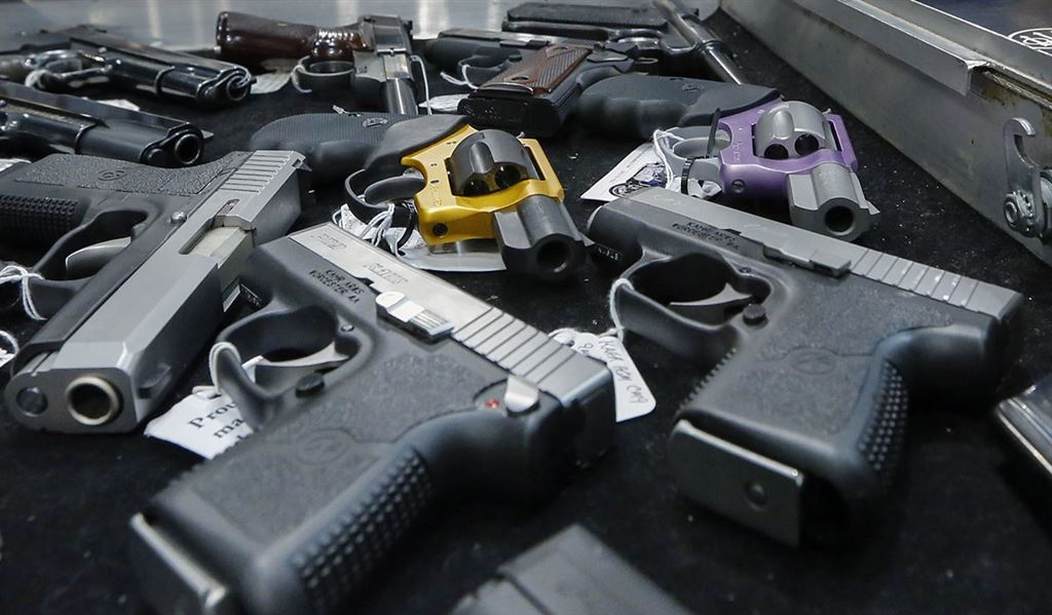Extreme Risk Protective Orders, otherwise known Red Flag orders, are premised on the idea that someone will see alarming behavior, notify the authorities, and the person’s guns will be taken away so they can’t commit a mass shooting. The idea comes because we examine mass shootings with the benefit of hindsight and look at these killers and think, “How did someone not notice all of this?” I include myself in that. I said as much about the Parkland killer, for example.
However, it’s not that simple. Leaving aside the Second Amendment and due process issues with red flag laws, both of which have been written about here at Bearing Arms extensively, there’s also the fact that red flags just won’t work.
Over at Reason, they pointed out some important points about how red flag laws aren’t going to do what some think they will. The first is perhaps the most important point, though:
Writing in The New York Times, psychiatrist Richard Friedman notes that “experienced psychiatrists fare no better than a roll of the dice at predicting violence.” He therefore thinks it is unrealistic to rely on the mental health system to identify future mass shooters and stop them before they kill anyone, as Donald Trump has suggested. Yet Friedman argues that “more effective policies might involve gun control, including enhancing background checks and expanding so-called extreme risk protection orders, which would allow law enforcement to temporarily remove firearms from people deemed potentially violent.”
If experienced psychiatrists aren’t any better at predicting violence from someone, then how in the hell are co-workers or family members going to predict it?
Let’s also remember that while one person working at the municipal building in Virginia Beach was worried about a mass shooting on the day it happened, she believed it was going to be another individual committing the shooting. In other words, a co-worker misidentified the shooter. Had she been carrying, as her husband urged, she could have stopped the shooting that occurred rather than the one she feared. However had she used a red flag law instead, not only would an innocent man be disarmed, but the shooting still would have happened.
Then there are those times when the law is used. What do those look like?
There is no solid evidence that red flag laws, the oldest of which (Connecticut’s) was enacted two decades ago, prevent homicides. But there are anecdotes. The New York Times describes the case of a San Diego car dealership employee who “told his co-workers that he would shoot up the place if he were fired” and who “praised the man who had carried out the Las Vegas massacre.” There was also a man who “told his fiancée he wanted to shoot her in the head” and “threatened to kill her ex-boyfriend.” Another man “told co-workers that he wished his supervisors would die, and that he could invite them hunting so it would look like an accident.”
San Diego’s city attorney, Mara Elliott, obtained gun confiscation orders against all three of those men under California’s red flag law. It is hard to tell from the sketches in the Times article whether the men’s threats (especially that last one) were in earnest, and it is impossible to say whether any of these men would have followed through on them. But it certainly makes sense to be concerned about people who own guns and have threatened to use them. “Of the first 100 restraining orders [Elliott] obtained,” the Times says, “one in seven involved people who had threatened violence at a workplace or a school, and about 10 percent involved people who made threats on social media.”
That accounts for less than a quarter of the orders. What about the rest? Based on the track record of red flag laws in Connecticut and Indiana (the first two states to enact such statutes), I’d guess most or all of them involved people who were deemed suicidal. Were they actually suicidal?
Even the most generous estimates, based on a method that may not be reliable, suggest that 90 to 95 percent of people who lose their Second Amendment rights under red flag laws because they are deemed a threat to themselves would not actually have committed suicide. Whether or not you think those odds are good enough to suspend someone’s constitutional rights for a year or more (and whether or not you think the government should be in the business of stopping people from killing themselves), it is notable that red flag laws are sold as a way to prevent murder but are mainly used to prevent suicide.
In other words, not only are mass shooters not generally disarmed by these laws, but neither are suicidal people.
The problem with red flag laws regarding suicide is that it may dissuade some, particularly veterans, from talking about being depressed. That can actually cause suicide as there is no outside vent for their feelings, which can cause even worse problems. They begin to feel like people would be better off without them since no one knows to tell them otherwise.
The post continues:
When you combine the focus on suicide with the dubious evidence and vague standards for gun confiscation orders, it seems clear that the vast majority of people subject to these orders do not actually pose a threat to others. The other side of the coin is that red flag laws do not necessarily identify people who are in fact bent on violence. Connecticut’s red flag law did not prevent the 2012 massacre at Sandy Hook Elementary School, even though the perpetrator was conspicuously troubled and had contact with the mental health system. It is unclear that even last year’s attack at a high school in Parkland, Florida, which prompted the recent spate of red flag laws, would have been prevented by the availability of gun confiscation orders.
Further, Thousand Oaks happened despite California’s strict gun control policies and a red flag law on the books. It also failed to stop the Gilroy shooting as well.
Some of the most recent mass shootings happened in states with red flag laws, after all.
The problem, however, is that proponents of the laws tout the number of times the law is used as proof it works. They don’t care about false positives. After all, those just make them look even better. Who cares about what ruined lives they leave in their wake?
If psychiatrists can’t figure out how people become violent and if those closest to depressed people are unable to predict suicide, then just what the hell are these laws going to accomplish?








Join the conversation as a VIP Member